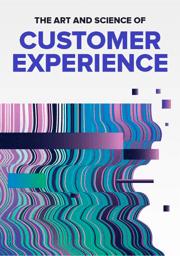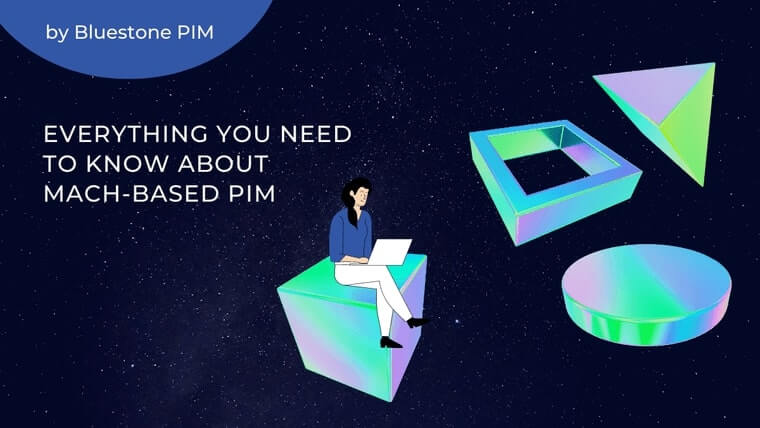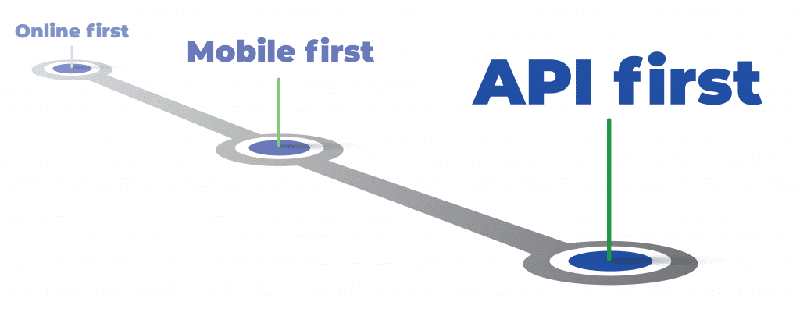
Industry 4.0, the fourth industrial revolution or the second machine age has a major influence on retailers in all aspects — including production, logistics, and last but not least, buying patterns. The world has now moved from the “online first” generation, through “mobile first”, to “platform first”, or “API first”.
Digital commerce vs e-commerce
The result of API dominance is a shift from e-commerce towards digital commerce, defined by Gartner as,
Buying and selling interactions among businesses, people and things for products/services via digitalization technologies; these interactions result in a valued transaction to the customer, based on a combination of factors, including good customer experience, inexpensive price, timeliness, ease of use, clear policies and others.
It is too general to say that e-commerce is about “being available online”. A transaction can happen in any channel, via conversation technologies, an Apple Watch, or a Google Home unit. There are technologies like chatbots, smart packaging, AR assisting with digital purchases, and so on. In the future, there can very well be hundreds of touchpoints between a customer and a company. More than that, customers want their in-store experiences and their digital experiences to be unified, like an extension of one another. That is why talking about e-commerce in the sense of one channel or one marketing strategy, is a narrowed view of the world we are entering. With time, each channel experiences growth, plateau, and demise.

Digital commerce is more of a digital ecosystem, in which retail companies will have their physical products at the core, augmented by digital interfaces and multiple services, either their own or third-party. One key requirement of Industry 4.0 is, then, seamless integration of the value chain partners, the customers, and the retailers in uninterrupted networks. These platforms will themselves create new opportunities and value for the stakeholders involved.
Buyers of software that supports e-commerce demand now much more than just a shopping cart. Software vendors should, therefore, support the entire selling process, create or facilitate personalized experiences, and offer data-driven merchant tools. In addition, a need for agility and speedy time-to-market are essential elements when evaluating the best digital commerce solutions. In 2021, potential profits here will be even larger for software vendors, as 26% of the total 2021 marketing budget will be dedicated to tech (Source: Gartner).
Building e-commerce stack
When building an e-commerce stack, there can be three distinctive approaches:
#1. All in one
The traditional approach is to go with an “all-in-one” solution, where the vendor provides everything from an e-commerce platform, order management, PIM, and customer experience. Although this method is good for the less experienced e-commerce companies, it has several drawbacks. Most importantly, you are putting all of your eggs in one basket, and therefore become fully dependent on the vendor to deliver the best solution. With an ever-expanding specialization of offerings, you can easily get locked in solutions that are mediocre — not very bad, but not great either. If you want to use another service from another vendor, it usually entails a change of the entire system. Since e-commerce solutions now are a major part of the sales channels, such a change will often be both costly and bout with high risk.
'All-in-one' suite software has one big risk – potential vendor lock-in. That's why best-of-breed approach is better. Click To Tweet#2. Mixed approach
A different approach to digital commerce solutions is when providers offer a full commerce management solution but use complementary third-party solutions, like for order management. This strategy gives customers more sense of freedom with regards to using other software. Still, the process of integrating with the existing commerce solutions may require hiring a team of developers, a task which needs to be planned carefully.
#3. Best of breed
The third type of solution available is also the latest way of purchasing software — headless commerce suites. Here, the commerce part of the e-commerce solution has been separated from the front-end. Headless commerce sits as an intermediary between ERP and the frontend. Such a solution often contains basic PIM, CMS, and OMS solutions, but their main selling point here is that these products can also be linked to any other type of service. This means that you, as a customer, can choose any best-of-breed solution that is currently the most relevant, and later change to another one when the market or the customer needs are changing.
The typical purchasers of a headless commerce system are companies that already have great knowledge and experience with e-commerce, and who have outgrown their existing solutions. They perceive their company’s digital assets as their main competitive advantage and know that this is what will make them winners (or losers) in the future.
The API economy makes it possible to combine more flexible, scalable, cost-effective, and high-performing solutions than ever before. Customers are looking for best-of-breed solutions to refine their business processes beyond what they are able to achieve within their existing system landscape and services. The needs for a faster pace of changes makes them turn to best-of-breed solutions that are capable of providing faster optimization of business processes to maintain competitiveness and increase margins and lower costs
Einar Augedal, CEO at Bluestone
Best-of-breed is really best
So — why should you consider headless commerce for your new commerce solution?
- You will gain a competitive advantage compared to other market players. By always searching for the next “best-of-breed” services for all aspects of your e-commerce solution, you will be able to give your customers the most optimal user experience, for example through personalization, search functionality, or omnichannel management.
- You will get extreme flexibility in your solution. By using pre-existing microservices on different functionalities, your time to implement the changes will be reduced dramatically. You see something interesting today, you can implement that solution tomorrow, without being locked to your main solution, or depending on your supplier’s internal roadmaps.
- You can optimize customer experience without facing the risk of disrupting the entire digital commerce solution. Changes and optimization of the frontend functionality can be done while keeping your commerce functionality intact.
- The best-of-breed strategy makes organizations more responsive to the changes in the market because the software is improved continuously and updated efficiently. Therefore, these organizations can enjoy a much faster ROI of the software.
- Best-of-breed technology is created and developed by specialists in their niche, who have an in-depth understanding of their area of expertise.

DOWNLOAD FREE E-BOOK
The Art and Science of Customer Experience
Over 50 pages of expert advice and top CX tips
It is estimated that in 2020, companies that generate digital trust will generate 20% more in sales. And since 2018 (Gartner), it is estimated that half of the commerce sites in the US have more than 15 vendors involved in their solutions.
This has a major impact on how customer experience is delivered. The companies that offer a personalized experience that strengthens the relationship with the customer will be among the winners. Best-of-breed solutions are clearly a path to building customer intimacy.
Do you want to learn what is the best approach to software choices for your brand in the face of digital transformation? Schedule a meeting with one of our experts!
Tags
E-commerce Tips API ecommerce digital transformation sales channel digital commerce digital trust future of retailYou might also like

MACH-based PIM: The Ultimate Guide

Talking about SaaS, AI, and What’s Next




